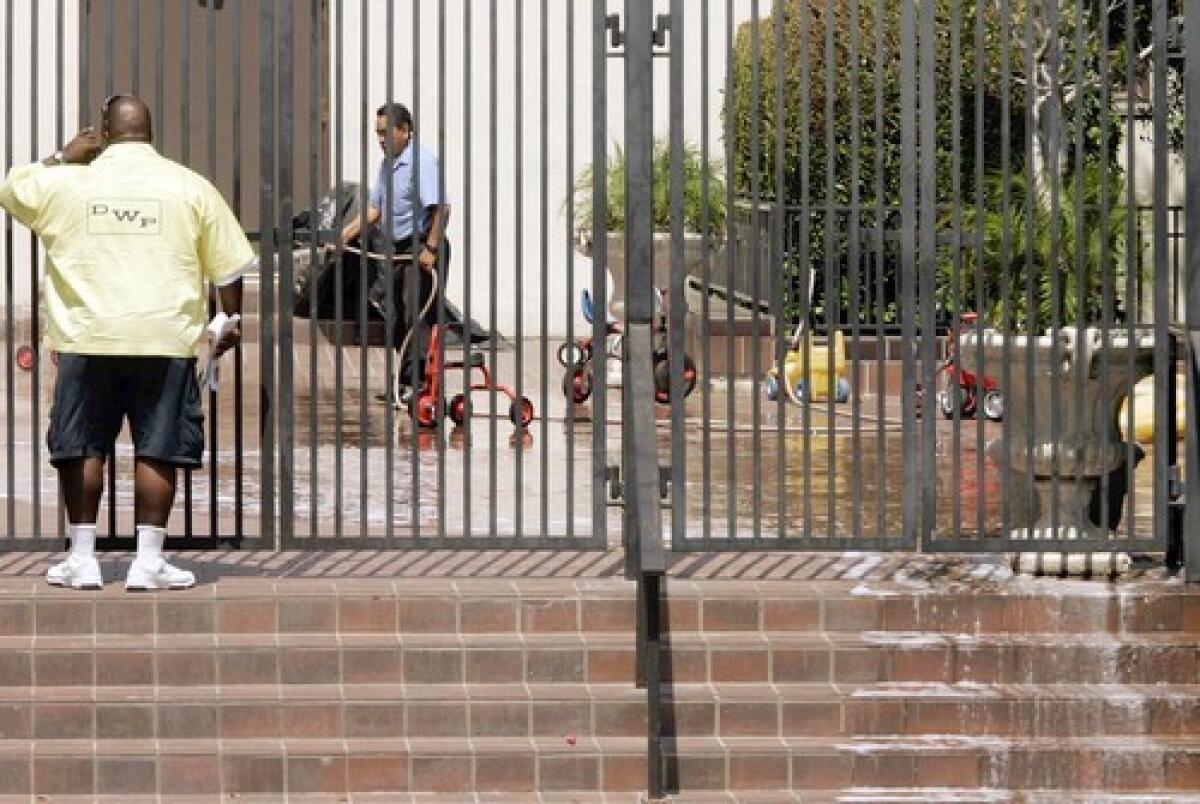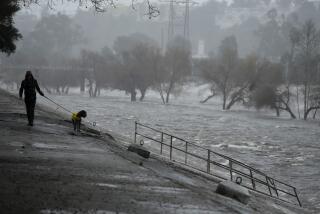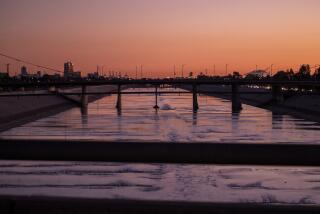On the prowl for water-use scofflaws

It was just after 9 a.m. when William Mims got busted in a Hancock Park driveway.
Slowly, he set down the gushing hose, which lacked an automatic shut-off nozzle, stepped away from the gray BMW he was washing and put his hands up.
“Hey, man, I confess. I confess. I was using just the hose,” he told Kevin Cato, a Department of Water and Power water conservation officer. “I won’t do it again.”
Since June 1, Cato and about a dozen other workers -- water cops, as some residents call them -- have been on the prowl in search of lawn-loving Angelenos who don’t know or don’t heed the city’s tightened water restrictions.
Nearly 700 citations have been issued to homeowners, apartment building managers, fast-food franchise owners, church clerks and Caltrans sites. Under more lax restrictions in place before June, the DWP even cited one of its own facilities.
“Everyone’s fair game,” Cato said.
Excuses abound as Cato appears in his fuel-efficient Prius, catching people with sprinklers raging and hoses flowing. They blame broken timers, clueless gardeners or -- as did Mayor Antonio Villaraigosa, who was publicly chided in 2007 for excessive water use -- newly installed irrigation systems and water-loving gophers.
Try as they might, offenders can’t hide the evidence. The precious commodity is already flowing down gutters and driveways, glistening off blades of grass and rosebushes when Cato rolls up.
“Some people look at me and say, ‘Go ahead and write me up. I’m gonna do what I’m gonna do,’ ” Cato said.
Most of the time, wrongdoers such as Mims rush to comply, and Cato, a 21-year DWP veteran, counsels and educates rather than reaching for his citation booklet. He leaves behind blue-and-white fliers that highlight a list of no-nos, such as using sprinklers any day except Monday and Thursday and washing down sidewalks and driveways.
Since the restrictions took effect, fewer than 30 water users have actually been hit with fines, which begin at $100 for a first offense. Most of the citations issued so far have been only warnings.
With water conservation officers patrolling only during regular business hours, some self-appointed water vigilantes have stepped in. They watch for mysterious puddles, broken sprinkler heads and after-hours hand-watering across neighborhoods and business strips. Then they send complaints -- more than 4,200 so far -- via phone, e-mail and most recently on Twitter.
“We’ve had a very high level of response and recognition that we’re all in this together,” said H. David Nahai, DWP general manager. “There have always been exceptions, either due to ignorance or other reasons, but we do try to reach them.”
Higher water bills and confusion over new watering rules have driven some residents to surrender and let weeds and dirt take over lots, particularly in the San Fernando Valley where many lots are larger and temperatures hotter than in other parts of the city.
Concerned about property values in the area, Councilman Greig Smith recently introduced several motions to expand the sprinkler allowance to three days.
He also wants exemptions for fire-prone areas such as Porter Ranch.
“We’ve been talking for decades about greening L.A., so it doesn’t make sense to put forth a policy that’s going to make everyone’s lawns go brown,” said Matt Myerhoff, Smith’s spokesman.
The water restrictions are prompting some property owners and garden clubs to ditch water-guzzling lawns for drought-resistant plant beds, mulch, cobblestone and rocks. Artificial-grass vendors, backed by a city rebate program, have also seen an uptick in business since water mandates took effect.
“You’ve got people in certain parts of the Valley sitting on half-acre lots and now they’ve been told, ‘You can only water twice a week,’ ” said Duane Ruth, owner of a local distributor of Synlawn, an artificial grass. “You might as well tell them you’re taking their house away.”
The restrictions, which are tougher than in nearby cities such as Beverly Hills, Pasadena and Long Beach, are apparently paying off. Recent figures released by the DWP show water demand citywide reached a 32-year low for June, down 11% compared with the same period in 2008.
Los Angeles as a whole has done well in saving water in the last 25 years. The population has grown by roughly a million people, but total water use has remained the same.
Still, with the city about to enter its fourth consecutive drought year, officials plan to keep pushing the need to conserve.
In Van Nuys, Jerry Pollack hopes his newly planted Japanese maple survives it all.
Pollack, 80, said he is well aware of the ban on watering between 9 a.m. and 4 p.m., but now and then he sneaks out to his front yard to quench the thirst of his trees and rosebushes.
One day recently, he got caught, hose in hand, and was written up by a water conservation officer. An attempt to explain his way out of it proved futile.
“Theoretically, I wasn’t breaking the law,” Pollack said. “I just didn’t want my tree to die. I wasn’t watering all over the place.”
On his way back to DWP headquarters, Cato spotted his last violator before lunch break: St. Nicholas Cathedral along West 3rd Street. A brook of foamy water flowed from the church’s gated courtyard down the road for several blocks.
Cato parked his Prius and sat still for a moment, looking up at the building.
“Forgive me, Lord,” he said before stepping out of the car, citation book in hand, and heading toward the stream of water.
esmeralda.bermudez
@latimes.com
More to Read
Start your day right
Sign up for Essential California for news, features and recommendations from the L.A. Times and beyond in your inbox six days a week.
You may occasionally receive promotional content from the Los Angeles Times.







